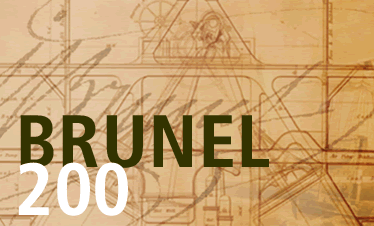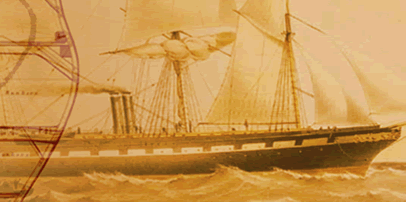








Maritime sailing ships had benefited from the new technologies by becoming iron and steel built, making them bigger and stronger than their wooden counterparts. Steam power was also harnessed to shipping, though it would be some time before sail would be eclipsed. The Scottish engineer William Symington (1763-1831) had built a catamaran style steamboat in 1788. He later developed this prototype in 1802 to create what is claimed as the first steamship, the Charlotte Dundas, which had a short-lived run on the Forth-Clyde canal until she was withdrawn because of the damage caused to the canal banks by her wake. The American Robert Fulton (1765-1815) used the Charlotte Dundas as a model for the world’s first commercial steam powered ship, the Clermont (1807). The first European steamship to be used for passengers and trade was The Comet (1812) by Henry Bell (1767-1830) which operated on the Clyde. Steamships were more expensive to operate than sailing ships, not least because of the higher wage costs: in the early days only the higher value cargo of passengers and mail tended to be carried by steam.
The use of steamships for international trade became more viable with the construction of the Suez Canal, which opened in 1869. Sailing ships had difficulty navigating the canal, as the wind did not always blow in the desired direction. Steamships did not have this problem and by shortening the journey to the East, the number of refuelling stops and the quantity of fuel to be carried were reduced, thereby increasing the economic benefit of steam power. One consequence of this was that it became even cheaper to import Indian cotton to the expanding British cloth industry. Fast and reliable ships were also increasingly in demand for emigration and the management of the Empire. High-pressure boilers and engines developed in the 1870s secured the steamship’s ascendancy and provided a boost for British shipbuilding: by the end of the century, 90 per cent of the large steamships in operation around the world were British built.
